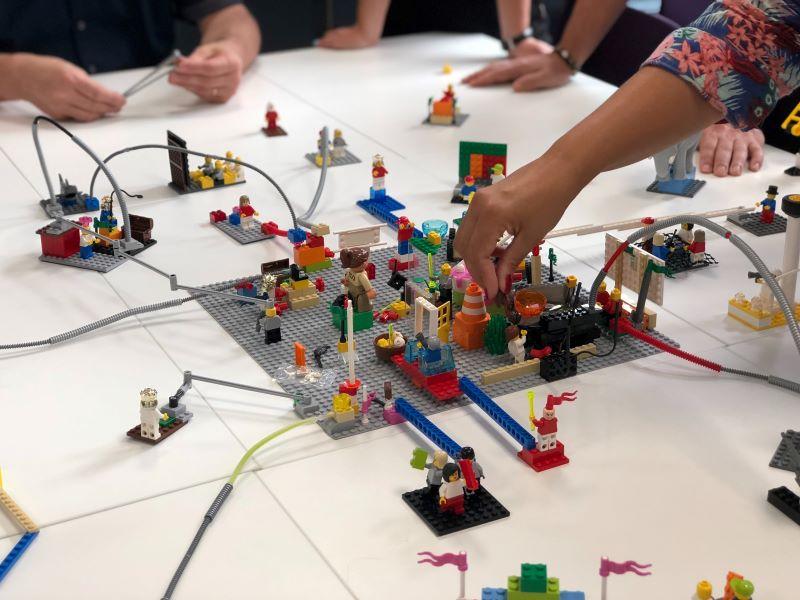After nearly 25 years of teaching biology at college level, regularly standing at a lectern providing lively explanations and geeking out about cell division, photosynthesis and DNA requires little, if any, preparation on my part. All it would take is a quick review of my notes and I could talk my way through the class period, pausing only to answer the occasional question from a perplexed student.
But I don’t. Instead, I do something that’s much more difficult and time-consuming for me: I seek out ways to incorporate interactive, challenging – and fun – opportunities for learning into all my classes.
While this approach to teaching and learning is gaining traction in K-12 instruction, it’s certainly not standard operating procedure at the post-secondary level. In colleges and universities across the world, students know what to expect in many courses: file into a classroom or auditorium and sit passively as their instructor talks for an hour or more.
- Immersive tech in teaching and learning: first steps into the metaverse
- Play on: how to build community on campus through music
- Want to be a better teacher? My daughter showed me we need to play more
This may have been an effective strategy in the 14th century, when books were scarce and oration was the best way to transmit information. But given Generation Z’s complete immersion in interactive technology – and the shift to remote learning we made at the start of the Covid-19 pandemic – this cycle of listening to lectures, taking notes and regurgitating the information come exam time seems downright antiquated.
Take, for instance, the Introduction to Biology course I teach, which usually has 200 to 300 students enrolled. Talking for 50 minutes and demanding that students hang on every word is, frankly, an unreasonable request to make of a 19- or 20-year-old with minimal interest in the subject. A student’s time could be better spent engaging with the material, their classmates and me instead of focusing on “the sage on the stage”.
While I haven’t totally eliminated lectures from my classes, I have experimented – and continue to do so – with various non-traditional teaching methods that have boosted student engagement and performance. Here are some examples:
Team-based learning
I modify this technique for quizzes – moving students from working alone to answering questions as a team. I enjoy watching them get animated as they hash out the answers, but the exercise is more than a fun diversion – my students learn more when they can explain their reasoning to others.
Word puzzles and games
Because biology is filled with complicated terms that students must understand to grasp the broader concepts – nearly 1,900, according to one estimation – vocabulary-building is a big part of my intro-level courses. In Microbiology 101, I start the semester with a reading and video about a world without microbes, then my students play a quizlet that turns language acquisition into something fun. Later, they advance to crosswords, cooperative play and the “say it in six” game, where they must define terms from their reading in six words. These games emphasise connections between the concepts and help students understand connotations of the terms – a far better method than memorising strict dictionary definitions.
Online discussions
I frequently use the online platform Packback to set up a focus question for students. This was especially helpful when I built a new course called Preparing for the Next Pandemic: Living in a One Health World, during the fall semester of 2019 (and yes, that date is correct). Students would have to answer a probing question about the week’s topic, ask one question, then reply to two posts from their classmates. It not only provoked a lively conversation, it also gave students a chance to improve their writing and researching skills by bringing academic articles into the discussion.
Game-based learning
By far the most creative – and elaborate – non-traditional teaching method I’ve used is game-based learning for an online microbiology class that serves more than 100 students a year. The game, Save Us, uses a compelling narrative that we created with the help of a professional writer: students crash-landed on an asteroid and were stranded there for the foreseeable future. When there was an outbreak of multidrug-resistant bacteria on board their spaceship, they had to travel from station to station, searching for ways to save their crewmates.
Our goal was grounding students in the basics of microbiology – microbial structure and function, antibiotic resistance, the immune response, public health and other topics – as they worked through this imaginary life-or-death problem. The results were encouraging. Students enrolled in Save Us achieved higher normalised learning gains – modestly so, but still higher – than the equivalent face-to-face course.
When people learn that I’m a college instructor, they invariably ask what I teach. “Students. I teach students,” I tell them, before providing details about my courses. I phrase it that way because students are the centre of my professional world; my job is developing their knowledge and, hopefully, sparking their interest in microbiology specifically or science in general. Yes, the non-traditional methods I employ in the classroom require more work, but it’s time well spent if students become so engrossed in the activities that they forget they’re learning.
Nancy Boury is assistant professor of plant pathology and microbiology at Iowa State University. She is the winner of the American Society for Microbiology’s 2022 Carski Award for Undergraduate Education, which recognises significant contributions to education in microbiology.



comment